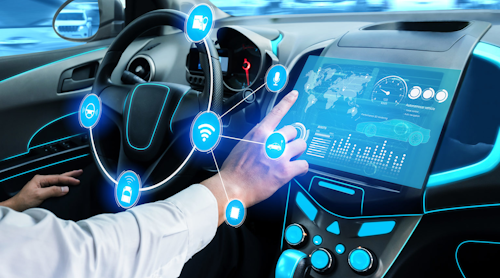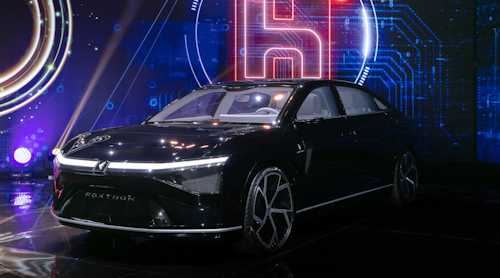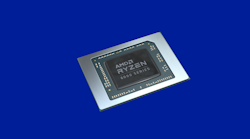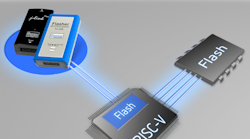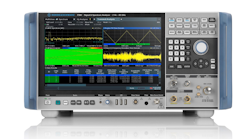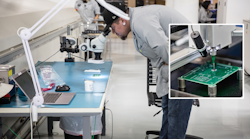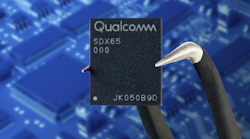The communications avalanche propelling today’s “connected” lifestyle has piled into the auto industry in a big way. With all of the recent advances in automotive technology, the concept of the car as a four-wheeled computer is finally becoming a reality. Scores more vehicles that are connected to the network via embedded cellular modules and mobile phones hit the road every day.
Auto manufacturers and drivers recognize that connecting vehicles to the network is a logical step forward, and are homing in on the multitude of potential opportunities. For example, at the Fully Networked Car Workshop held during this year’s Geneva International Motor Show, Ford Group Vice President of Global Product Development Derrick Kuzak said the company’s SYNC platform, a fully integrated in-vehicle communications and entertainment system, is already generating additional revenue per vehicle. A similar success story came from Greg Ross, GM’s Vice President of Business Extensions for OnStar, who reported that the company generated $1 billion in revenue from its OnStar system in 2010.
This opportunity, together with electric-vehicle (EV) initiatives, have car manufacturers implementing a new architecture in which powerful, general-purpose embedded computing devices replace dedicated electronic control units (ECUs). These more powerful devices help reduce on-board software, minimize hardware complexity, and reduce costs. Moreover, they enable more sophisticated in-vehicle services and applications that will ultimately turn the car into the “fifth screen” (after movies, TVs, PCs, and mobile devices). By doing so, manufacturers can fulfill the need for communication and information access on the road, and fully integrate the car into consumers’ connected lives.
The automotive industry will likely follow the mobile-phone industry in the sense that, once connected, the car—just like today’s smartphones—will become a platform for new content and services. Thus, two significant trends have emerged within the automotive industry: growth in the number of software-based features in vehicles, and the replacement of ECUs with more powerful, general-purpose, embedded computing devices via technologies such as mobile virtualization and mobile software management.
By applying a mobile software-management-enabled mobile-virtualization solution, automotive manufacturers are free to securely deploy real-time systems and advanced, entertainment-focused, high-level operating systems (HLOSs) on the same on-board computing device that handles traditional systems like climate control. Doing so will increase hardware utilization and streamline costs, giving carmakers a stronger platform to build valuable, ongoing relationships with their customers. And, as the industry is already proving, lucrative new software-driven business models exist for those dedicated to doing it right.
IVI: The Connected Car’s Core
车载信息娱乐(IVI)系统在功能强大的统一计算框中汇集了无线连接,IP通信基础架构,中间件和应用程序。IVI为制造商提供了新的机会,可以引入更好的用户体验和创新的车载服务,并解决与可管理性相关的挑战并改善品牌差异化。
从the driver’s perspective, in-vehicle infotainment is the best way to enhance the driving experience while providing a safer driving environment. It does so by centralizing features such as GPS, climate control, and parking sensors with navigation, traffic reports, and online information, including weather, location-based services (LBS), and multimedia.
IVI also offers the opportunity to provide additional services and applications to consumers to fulfill the need for communication and information access on the road. As a result, manufacturers can create an additional source of revenue, while transforming the customer relationship typical of today—one that’s associated with issues such as repairs and, in the worst case, vehicle recalls.
In addition, IVI systems are transforming the traditional competitive parameters of the automobile industry, i.e., costs and vehicle performance. As the fully networked, computerized car increases the need for processing power to handle the various in-vehicle services, the same processing power can be used to manage systems that were once the province of dedicated ECUs (in the short term, the critical safety systems connected to the CAN bus will remain separate from the IVI subsystem).
Hardware utilization will dramatically improve if multiple systems can share computing power in a secure manner, which also reduces costs. Beyond cost reduction, module consolidation results in lower vehicle weight due to simplified wiring, along with corresponding design and manufacturing benefits.
The integration of various software systems onto the same central computing unit creates interesting opportunities to boost the performance of the car. For instance, the driver can obtain information regarding when it’s optimal to refuel, as well as receive real-time feedback about the effects of driving habits by integrating information from the engine control system with location-based services. This will save fuel and, perhaps, even lives.
Non-safety critical systems will be the first to move across in the short term. Eventually, the deeply embedded world and the IVI world will converge.
Lessons From The Mobile-Device Industry
移动设备制造商和网络运营商了解到,在一个广泛可用的网络访问和类似设计的触摸屏设备的世界中,该产品真正区别在于experience。因此,在过去的十年里,移动industry has transformed from being a closed, embedded marketplace to one that embraces open platforms and always-on connectivity in today’s powerful smartphones and emerging mobile devices. With the in-vehicle experience heading in the same direction, the automotive industry can learn several important lessons from the mobile-phone market.
当市场从硬件驱动到软件驱动的情况下,首先涉及需求的转变。负责构建第一台手机的嵌入式无线电工程师是硕士学位,从而充分利用了他们可用的硬件。一旦足够的带宽,处理能力,颜色屏幕和直观的用户界面到达,焦点就会自然地从硬件变为软件。没有摆脱面向硬件的理念的公司的市场份额下降。
在以软件为中心的市场中,该平台至关重要,因为它允许移动OEM随着时间的推移和跨客户群扩展和扩展产品。平台还使公司能够利用外部创新,并在完成初始销售后为客户提供新功能。
在高度移动的环境中了解始终变化的连接要求很重要。尽管IT市场的许多初始数据应用程序都依靠固定,便宜和几乎无限的带宽,但移动数据网络并没有提供如此奢侈。带宽有限,昂贵且间歇性,并且根据位置,数据传输率可能会有所不同。因此,对于先进的车载通信技术的开发人员来说,了解应用程序如何在所有适用上下文中使用带宽。
Well-designed, intelligent applications can behave differently depending on the available bandwidth and the location (e.g., to limit roaming costs). For instance, when a car is near a Wi-Fi hotspot such as the home, large amounts of data can be transferred for consumption at times when bandwidth is relatively unlimited and inexpensive. Protocols and applications need to be designed to cope with the loss of connectivity as well.
从本质上讲,软件也比硬件更灵活。软件更新和应用程序管理是在移动设备的整个生命周期内与客户建立持续关系的关键。在汽车市场也是如此。
When the mobile-phone market shifted from hardware- to software-based, a number of leading companies opted to use over-the-air software updating technologies as a competitive differentiator to retain customer loyalty and provide new revenue opportunities. As mobile service providers pushed out new software to consumers, they also recognized the importance of having access to information about software performance and usage.
Thus, today’s generation of sophisticated mobile devices incorporate impressive analytic and diagnostic agents available to collect information about everything from consumer behavior to rogue applications to hardware and network issues. Quick troubleshooting and the ability to identify the problems even before they’re encountered by the customer have been key factors to providing quality mobile service.
Another consideration when weighing open versus closed systems revolves around the issue of security. Security is often used by established engineering organizations as an argument to justify why the embedded approach of closed RTOS-based systems is preferable. When looking at security in isolation, closed systems are safer than open systems. However, once other requirements are added, such as cost and customer needs, the closed approach becomes impractical—and more expensive.
作为起点,开放平台应是不可谈判的基线要求。工程组织应激励设计安全系统以适合特定部署。
Technologies such as mobile virtualization allow for secure partitioning of legacy systems and new open systems. Thanks to application certification and revocation, the manufacturer can plug into an existing developer community without opening the floodgates to malware and rogue applications. In fact, the experience with security in the mobile market can be leveraged and deployed profitably by the automotive industry.
管理汽车的连接汽车的发展
随着革命性的新技术在消费者生活的几乎所有方面都出现了,这辆汽车“连接”就不再足够了。随着越来越多的汽车建立联系,该行业的下一步是专注于如何管理连接的汽车及其IVI系统作为新服务的平台。这体现在“托管汽车”的概念中。最终,汽车价值链必须确保其具有必要的管理功能来实现下一代车内服务。
Now that it’s essentially a computer on wheels, the car’s connectivity and what is actually connected—firmware, software, and applications – must be managed easily and comprehensively to see a return on investment in the short term, and gain a competitive advantage in the long run. This includes the ability to add, update, and remove software throughout the lifetime of the vehicle, and acquire business intelligence with application analytics on software usage as the mobile-device industry conveniently discovered.
成功的软件升级服务的两种关键要素是可靠性和灵活性。这些属性是必不可少的,尤其是在汽车行业,因为它们确保消费者对接收软件更新的信心,同时使服务提供商能够在车辆一生中保持其价值主张的最新能力。事实证明,空中软件更新是OEM管理车辆软件的最可靠,灵活,全面和成本效益的方法(Fig. 1)。
Furthermore, the requirements of an IVI platform are so diverse that no single OS can meet them without compromising on functionality, performance, stability, and/or security. The key for a multiservice software-delivery model is to have a dedicated OS for car-assistance services, another for infotainment, and a third for consumer-downloaded applications (the latter can be unified with the infotainment).
The managed car can be achieved by using a full mobile software-management and mobile-virtualization solution to manage the IVI system(Fig. 2)。Such a system includes the following elements integrated in a central, connected computing box:
Real-time mobile virtualization:It’s able to manage multiple virtual machines (VMs) running different software stacks in parallel and utilizing the same hardware. In this scenario, each domain (one instance of VM, HLOS, and applications) can run completely different software stacks in a secure and failsafe manner (failure in one OS will not impact another), from the smallest RTOS to the most feature-rich HLOS. This comprehensive solution addresses the diverse requirements of an IVI system in order to deal with the complex environment of the managed car. Simultaneously, it provides a migration path from existing legacy systems to new media-rich solutions.
For example, the system may be configured so that one domain would run a legacy RTOS controlling the parking sensors, while another runs an entertainment system on a HLOS (e.g., QNX, MeeGo, Android, or Linux). To provide maximum design freedom, each virtual machine can be configured in terms of key performance and usability criteria, such as startup time, access to resources, and priority versus other virtual machines. The parking sensors work in isolation from the HLOS to provide a split-second startup time after the vehicle is turned on and put in reverse. However, the entertainment system can boot powerful graphic capabilities and a full HLOS before services become available to the passengers.
Management virtual machine:This “machine” (red boxes inFigure 2)处理连接到后端软件-management center. It can update all of the virtual machines, control the configuration of the software running on all virtual machines, and monitor performance and usage characteristics of the software running on these machines. With this functionality, auto manufacturers are able to build an ongoing relationship with their customers by providing upgrades and new features. Moreover, new business models become possible, since the entire IVI system can be upgraded with new services without requiring the consumer to bring the vehicle to the dealership.
软件管理中心:A powerful cloud-hosted back-end system within the software-management-enabled mobile virtualization system includes asoftware-management center that provides a comprehensive interface to all deployed vehicles. From here, a fleet administrator can deploy, configure, upgrade, and manage software based on powerful, real-time reports regarding issues, software inventory, and customer usage. The software-management center uses optimized algorithms and protocols to ensure that bandwidth is used intelligently, costs are controlled, and the consumer has an excellent user experience.
Instant Updates
智能策略管理使汽车制造商能够配置汽车在家中使用Wi-Fi进行重型数据流量和移动网络,从而可以立即更新,例如流量信息或基于位置的服务。由于该服务完全是云的托管,因此制造商甚至可以让车主配置或管理特定的车辆内服务,或者第三方可以对特定子系统(例如导航)承担责任。这些系统已经在非常具有挑战性的软件管理环境中管理着全球数十亿个移动设备,并具有很高的用户满意度。
Morten Grauballe, executive vice president of products, holds aB. Sc。和M.Sc。丹麦哥本哈根商学院的国际工商管理。可以在morten.grauballe@redbend.com。
Yoram Berholtz, director of business development holds a B.Sc.E.E.来自以色列的电视转播大学和英国布拉德福德大学的MBA。可以在yoram.berholtz@redbend.com。

